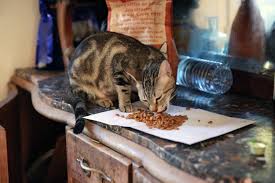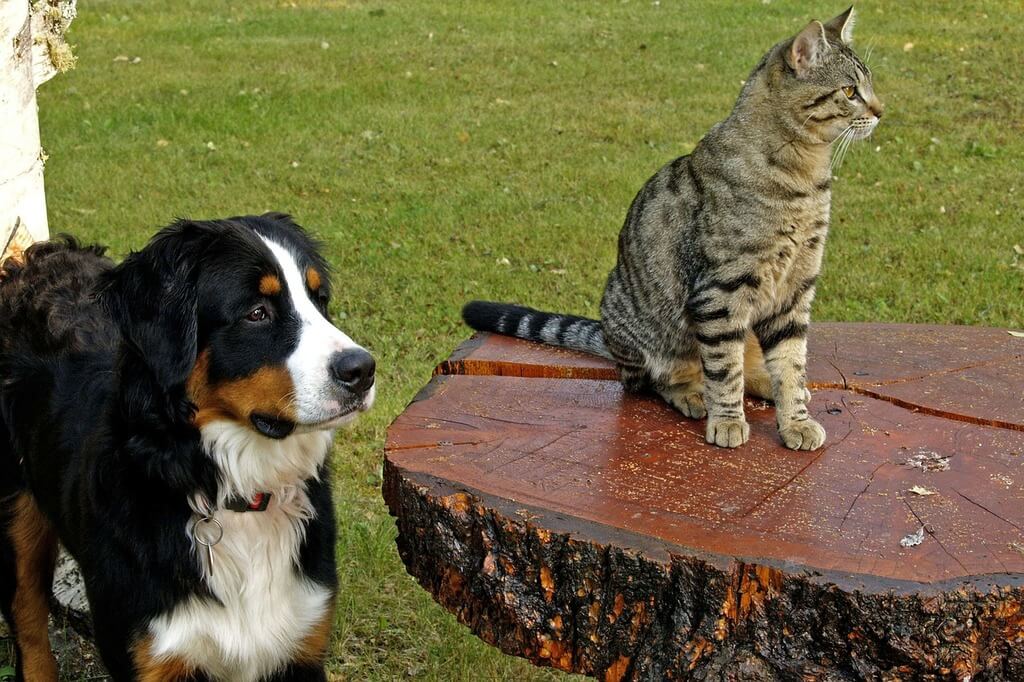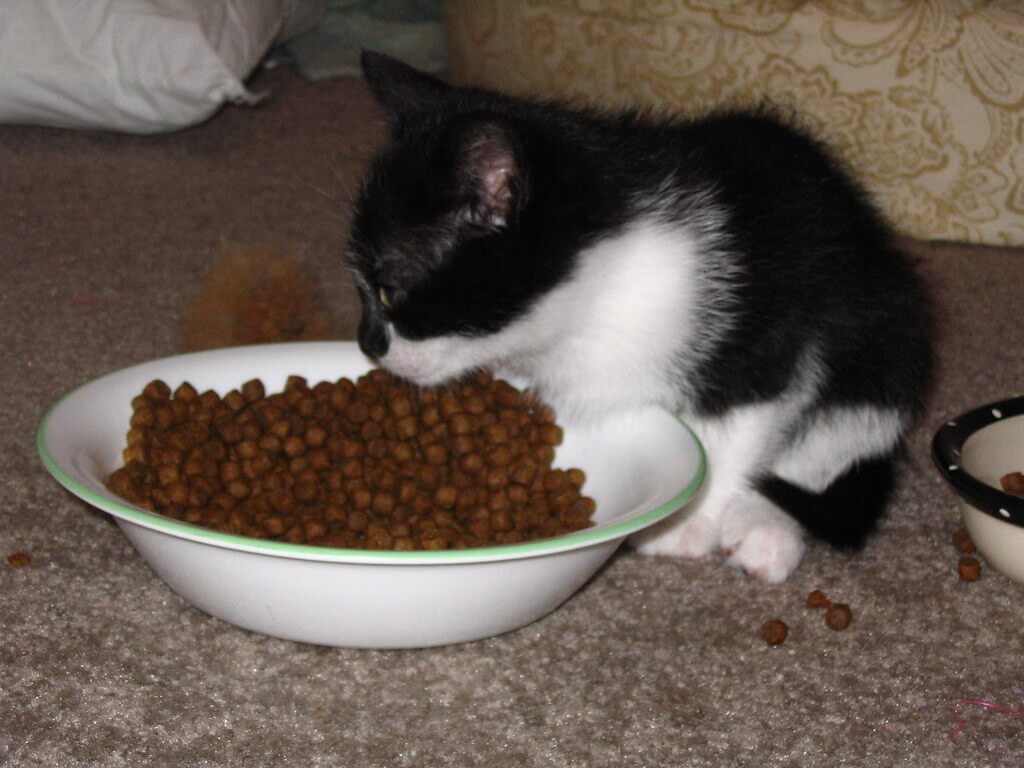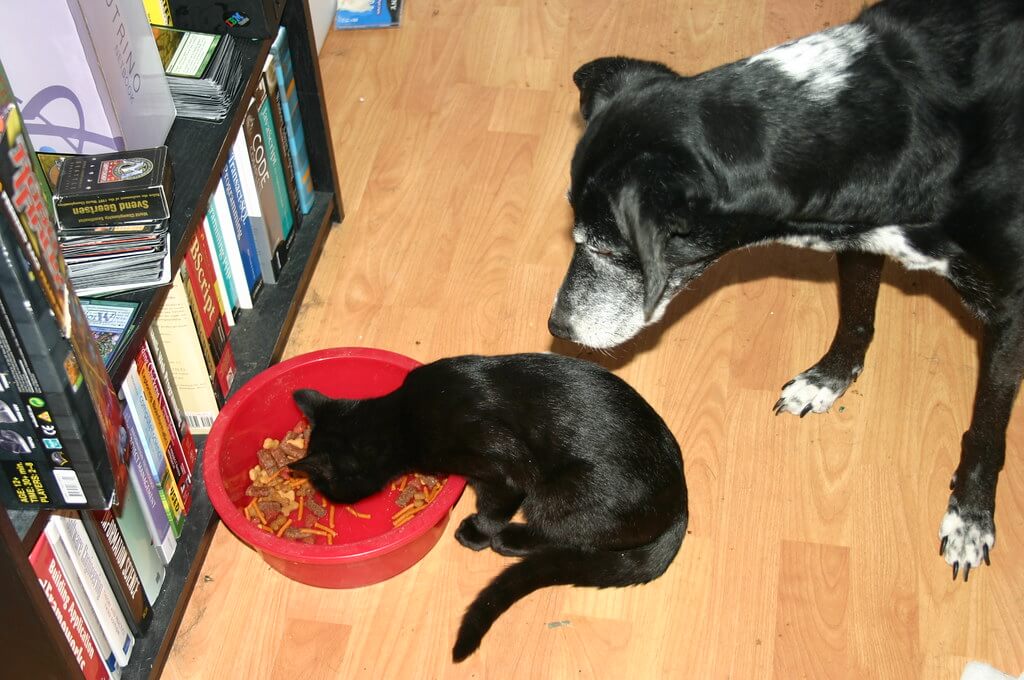How to Keep Dogs Out of Cat Food
- How to Keep Dogs Out of Cat Food might be a difficult undertaking for pet owners with both cats and dogs. Not only is it frustrating when your dog sneaks into the cat’s food bowl, but it can also lead to health issues since cat food is not nutritionally balanced for dogs. This thorough guide will go over a number of effective strategies to prevent this behavior. We’ll start by discussing physical barriers like elevated feeding stations and baby gates that can keep your dog away from the cat’s food. Next, we will explore training techniques such as basic commands and positive reinforcement to teach your dog to leave the cat’s food alone.
- Additionally, we’ll look into alternative feeding solutions like scheduled feeding times and automatic feeders to help manage meal times effectively. By the end of this guide, you’ll have a range of practical tips and methods to ensure your dog doesn’t raid the cat’s food, maintaining peace and health in your multi-pet household. Understanding how to keep dogs out of cat food is crucial for the well-being of both pets and with the right approach, you can achieve a harmonious feeding environment.
Understanding the Problem

Why Dogs Eat Cat Food: Dogs often find cat food irresistible due to its high protein and fat content. Cat food is typically richer and more aromatic than dog food, which naturally attracts dogs. Additionally, dogs are curious by nature and enjoy exploring new tastes and textures. This curiosity can lead them to sniff out and eat cat food, especially if it is easily accessible.
Nutritional Differences: While it might not seem like a big deal if your dog occasionally eats cat food, it’s important to understand that cat food is not suitable for dogs in the long run. Cat food is made especially with cats in mind, with increased fat and protein content, which may be too much for dogs. Dogs need a distinct ratio of nutrients, such as more carbohydrates and specific vitamins, that are not present in cat food.
Eating cat food regularly can lead to nutritional imbalances and health problems for your dog, such as weight gain and digestive issues. This is why it’s crucial to prevent your dog from eating cat food and ensure they maintain a diet that satisfies their dietary requirements.
Why It’s Important to Keep Dogs Out of Cat Food
Health Risks for Dogs: Allowing your dog to eat cat food can lead to several health issues. Cat food has a lot of fat and protein, which can cause obesity in dogs. This may eventually result in more severe health issues, like diabetes and heart disease.
Additionally, the rich ingredients in cat food can upset your dog’s stomach, causing gastrointestinal problems such as vomiting, diarrhea, and pancreatitis. Your dog may find these problems uncomfortable and may require veterinary attention.
Nutritional Needs: Cats and dogs have varied dietary requirements, and their food is specially formulated to meet these needs. Dog food has a well-balanced combination of proteins, fats, carbohydrates, vitamins, and minerals suited to a dog’s metabolism and activity level.
In contrast, cat food is designed for cats, who are obligate carnivores and need higher levels of protein and certain nutrients like taurine. Regular feeding of food to your dog or cat may result in nutritional imbalances, depriving them of essential nutrients they need and overloading them with ones they don’t. This is why it’s crucial to keep dogs out of cat food and ensure each pet is eating the right diet for their health and well-being.
Physical Barriers to Keep Dogs Out of Cat Food

Elevated Feeding Stations
Benefits: Elevated feeding stations are effective because they raise the cat’s food bowl to a height that dogs typically cannot reach. This helps to keep the cat’s food out of the dog’s reach and reduces the likelihood of the dog sneaking a snack.
Setup Tips: To set up an elevated feeding station, choose a sturdy platform or purchase a specially designed raised feeder. Place the cat’s food and water bowls on top of the platform where only the cat can comfortably access them. Ensure the station is stable to prevent spills and accidents.
Baby Gates and Pet Doors
Using Baby Gates: Baby gates are useful for creating a designated cat-only area in your home. Position the baby gate in a doorway or hallway where the cat’s food and litter box are located. Make sure the gate is tall enough that your dog cannot jump over it yet it is easy for your cat to navigate through.
Pet Doors: Install a small pet door that is big enough for your cat to pass through but too small for your dog. Place the pet door in a door leading to the cat’s feeding area. This will allow your cat to access its food while keeping the dog out freely.
Feeding Enclosures
Types of Enclosures: Various types of feeding enclosures are available, such as enclosed feeding stations or cat-specific feeding rooms. These enclosures have openings or doors that only cats can fit through, keeping the food safe from dogs.
DIY Options: You can create simple DIY enclosures using materials like cardboard boxes or storage containers. Cut holes in the sides for your cat to enter and exit while keeping the openings too small for your dog. This inexpensive solution can effectively protect your cat’s food from your dog’s curiosity.
Training Your Dog
Basic Commands
Teaching “Leave It”:
- Teach your dog the “Tell them to “leave it” so they can not get near or consume the cat’s food. Hold a goodie in your closed fist to begin. When your dog sniffs or shows interest, say “Leave it” and wait for them to back off.
- Reward them with praise and a different treat when they do.
- Repeat until they reliably respond to the command.
Reinforcing Boundaries:
- Set up distinct limits for your dog in the area of the cat’s feeding area.
- Use a leash or baby gate to prevent physical access.
- Redirect your dog’s attention with toys or treats when they approach the area.
Consistency is key to reinforcing these boundaries effectively.
Positive Reinforcement Techniques
Reward-Based Training: Use treats and praise to reward your dog when it follows commands or respects boundaries. Associate positive behaviors, like ignoring the cat’s food, with rewards to encourage repeating these actions.
Consistency: Maintain a consistent training regimen to reinforce good behavior consistently. Frequent, short sessions yield greater results than infrequent ones.
When teaching your dog to respect the cat’s feeding area, be persistent and patient. This constancy reinforces the value of leaving the cat’s food alone and helps your dog understand what is expected of them.
Positive Reinforcement Techniques
Reward-Based Training: Using Treats and Praise to Encourage Desired Behavior Positive reinforcement is a popular and effective training method that involves rewarding good behavior to encourage it to happen again.
Reward-based Training is a key technique in this method. When you see your pet doing something good, you give them a treat or praise them. For example, if your dog sits when you ask, you can give them a treat or say “Good job!” in a happy voice.
This makes your pet feel happy, and they learn that sitting when asked gets them a reward. Over time, they will want to sit more often because they like the treats and praise.
Consistency: The Importance of Consistent Training Sessions Another crucial aspect of positive reinforcement is Consistency.
It is important to train your pet regularly and in the same way each time. If you want your pet to learn something new, you need to practice it every day.
This helps them understand what you expect from them. Consistent training sessions also mean using the same commands and rewards. If you change the words or the rewards too often, your pet might get confused.
For example, always use “sit” for sitting and always give a treat for sitting. Being consistent helps your pet learn faster and makes the Training more effective.
Alternative Feeding Solutions

Scheduled Feeding Times
Benefits of Scheduled Feeding:
How Scheduled Feeding Can Prevent Your Dog from Accessing Cat Food Scheduled feeding times mean giving your pets their food at the same times every day. One big benefit of this is that it can help stop your dog from eating cat food.
When you feed your cat and dog at set times, you can supervise them while they eat. This way, you can make sure that your dog only eats their food and not the cat’s food. Keeping your dog from eating cat food is important because dog and cat foods have different nutrients suited to their specific needs.
Implementation:
Tips for Setting and Sticking to a Feeding Schedule To start a feeding schedule, designate particular times of the day for your pets’ meals. For example, you might feed them in the morning and evening.
Make sure to feed them at the same times every day. Use a timer or set an alarm to remind you when it’s feeding time. Stick to the schedule, even on weekends, so your pets know when to expect their food. Feeding schedule: designate particular times of the day for your pets’ meals. Rooms or areas to prevent them from eating each other’s food.
Automatic Feeders
How They Work:
Explanation of Automatic Feeders for Cats Automatic feeders are devices that dispense food for your pets at set times. You can fill the feeder with food, and it will release a portion of the food at the times you choose.
This is helpful if you are not home during feeding times or if you want to control the portion sizes your pet eats. You can program automatic feeders to feed your cat multiple times a day, ensuring they get their meals on time.
Features to Look for in an Automatic Feeder
When choosing an automatic feeder, look for features like a timer, portion control, and ease of cleaning. A timer lets you set the feeding times. Portion control allows you to set the amount of food that is dispensed, which is great for managing your pet’s weight.
Ease of cleaning is important because you want to keep the feeder hygienic for your pet. Some automatic feeders also have special features like battery backup, which ensures they work even during power outages, and smartphone control, which lets you adjust settings remotely.
Tips for Maintaining Separation
Supervised Feeding:
Ensuring Your Pets Eat Their Meals Under Supervision One of the best ways to make sure your pets eat their food is to watch them while they eat. Supervised feeding means staying with your pets during meal times to make sure each one eats their food and doesn’t go after the others.
This is especially important if you have both dogs and cats, because their dietary needs are different. By supervising, you can immediately correct any behavior where one pet tries to eat another’s food, ensuring they only get the nutrition meant for them.
Separate Feeding Areas:
Creating Distinct Feeding Zones for Dogs and Cats Another effective way to maintain separation is to set up Separate Feeding Areas. This means feeding your pets in different rooms or areas of your home. For example, you could feed your cat in the kitchen and your dog in the living room.
By keeping their feeding zones apart, you reduce the chances of them accessing each other’s food. You can also use barriers like baby gates to keep them apart during meal times. This method helps ensure that each pet eats only their own food, maintaining their health and dietary needs.
Cleaning Up:
Removing Uneaten Food Immediately to Prevent Access After your pets have finished eating, it is important to clean up right away. Cleaning Up means picking up any leftover food and washing their bowls.
This prevents your pets from eating each other’s leftover food later on. Leaving food out can lead to overeating or one pet eating food meant for the other.
By removing uneaten food immediately, you help keep their diets separate and controlled. Plus, it keeps your feeding areas clean and reduces the risk of attracting pests.
Consulting Your Veterinarian
Professional Advice:
When to Seek Advice from Your Vet It’s important to know when to get help from a professional. Professional Advice from your veterinarian is crucial in many situations. Should your pet exhibit any symptoms of disease, changes in behavior, or unusual eating habits, it’s time to contact your vet.
They can assist in identifying any problems and taking the best course of action. Regular check-ups are also a good time to ask any questions you may have regarding your pet’s health and diet to your veterinarian. Consulting your vet ensures that your pets stay healthy and any problems are caught early.
Nutritional Guidance:
Ensuring Both Pets Are Getting the Right Nutrients Ensuring that your pets get the right nutrients is vital for their health. Nutritional guidance from your veterinarian can help you achieve this.
Vets can recommend the best types of food for your pets based on their age, weight, and medical circumstances. They can also provide guidance on serving sizes and feeding schedules.
If you have both dogs and cats, your vet can suggest diets that meet the specific needs of each species. Proper nutrition helps your pet’s medical circumstances. They can also provide guidance on serving sizes and
How to Keep Dogs Out of Cat Food (FAQs)
Can cat food harm my dog?
Yes, if eaten regularly, cat food can harm your dog. It is too high in protein and fat, which can lead to health issues.
What if my dog eats cat food occasionally?
If your dog eats cat food occasionally, it’s generally not harmful, but it should not become a habit.
Are there any cat food brands that are safer for dogs?
No cat food brands are specifically safe for dogs; dog food is formulated to meet their unique dietary needs.
Conclusion
Recap of Key Points: Summarizing Effective Strategies to Keep Your Dog Out of Cat Food Keeping your dog out of cat food is important for their health. We’ve covered several effective strategies to help with this. Scheduled Feeding Times help by allowing you to supervise meal times and keep food separate.
Thanks to automatic feeders, pets are fed on schedule and in the right amounts, reducing the chance of food sharing. Supervised feeding and separate feeding areas create a controlled environment where each pet eats its food. Lastly, Cleaning Up immediately after meals prevents any leftovers from being eaten by the wrong pet.
Encouragement and Final Tips:
Motivating Pet Owners to Implement the Solutions and Maintain Consistency Implementing these solutions can greatly benefit your pets’ health and well-being. Consistency is key; stick to your feeding schedules and keep up with the separation methods.
Remember, your efforts will lead to healthier, happier pets. If you have any concerns, always seek Professional Advice from your veterinarian to ensure you’re meeting your pets’ nutritional needs.
Following these recommendations and remaining consistent will allow you to successfully manage your pets’ diets and prevent any issues from arising. Keep up the good work, and your pets will thank you for it!

